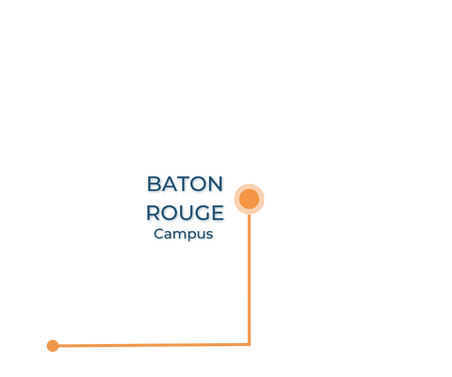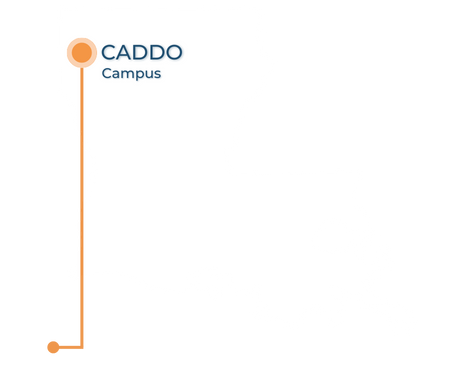LKA Admissions
I. Admissions Overview
The Louisiana Key Academy (LKA) admissions process is designed to identify students with dyslexia.
Louisiana Revised Statute 17:7(11) defines dyslexia as “an unexpected difficulty in reading for an individual who has the intelligence to be a much better reader, most commonly caused by a difficulty in the phonological processing which affects the ability of an individual to speak, read, and spell. “Phonological processing” means the appreciation of the individual sounds of spoken language LKA shall admit any student who meets this definition as determined by its admissions application review and assessment. LKA does not exclude students on the basis of race, color, disability, and national and/or ethnic origin. Submission of an application does not guarantee admission to LKA. As part of the admissions process to LKA, every child participates in a process that includes but is not limited to:
1. Screening
Prior to the scheduling of an admissions testing session, the application and relevant records shall be reviewed to determine whether the student has previously exhibited signs of dyslexia as defined under La. R.S. 17:7(11) and Bulletin 1903.
a. Review of prior academic records
Documents reviewed can include, but are not limited to: prior report cards, notes from the student’s current teacher, all prior evaluations (psycho-educational, speech evaluation, school evaluations, etc.), Individualized Education Plans and/or Accommodations plans. Parents must submit all records available to them including historical academic records, relevant pediatric medical records, and evidence of any prior medical and/or educational diagnosis (ex: ADD, ADHD, current seizure activity).
b. Review of relevant medical records and diagnoses
c. Pre-parent interview
2. Admissions Testing
LKA admissions testing consists of the below procedure which shall be conducted by a Certified Academic Language Therapist (CALT) who has completed the LKA Admissions training process to determine whether the student has dyslexia as defined under La. R.S. 17:7(11) and Bulletin 1903. LKA contracts with the Dyslexia Resource Center (DRC) which conducts all of its admissions testing.
LKA will review all screening documents and admissions testing results to determine whether the student is eligible for admission. Only students deemed eligible for enrollment based upon the school’s application process will be qualified for participation. Further, if the number of qualified applicants exceeds the number of available openings, admission will be determined by lottery. Where there are no openings for qualified students in a particular grade, all excess applicants to that grade shall be placed on the waitlist and shall be tested as openings arise.
II. Admissions Process
1. The interested parent completes an application on LKA’s website.
2. The Case Manager reviews the application to ensure that all required supporting documentation is attached to the application.
a. If the required documentation is not attached to the application, the Case Manager contacts the parent to request the required documentation.
b. Once required documentation is received, the Case Manager transfers the case to the Special Education Coordinator.
3. The Special Education Coordinator reviews the application and attached documentation for evidence that the student is eligible for admission.
a. After the case is reviewed by the Special Education Coordinator, the case is transferred to the Dyslexia Resource Center (DRC).
4. The DRC Evaluator contacts the parent to schedule a parent interview.
5. The DRC Evaluator conducts the parent interview via phone.
6. The applicant’s clinical information which includes their application, supporting documents, and the parent interview are reviewed to determine if the student is at risk for a diagnosis of dyslexia.
a. If the student is not found to be at risk for a diagnosis of dyslexia, the DRC evaluator writes the student’s report and holds a follow-up meeting with the student’s parent with the identification decision via phone, Zoom, or in person.
7. If through the review of the clinical information, the student is found to be at risk for a diagnosis of dyslexia, the DRC Evaluator conducts the admissions testing via Zoom or in person and continues to the following steps:
8. The DRC Evaluator reviews the case and determines if the student has dyslexia, does not have dyslexia, or if more information is needed before making a decision.
a. If needed, the DRC Evaluator consults with the Chief Academic Officer to make a determination.
9. The DRC Evaluator holds a follow-up meeting with the student’s parent with the identification decision via phone, Zoom, or in person.
10. The DRC Evaluator reaches out to the Case Manager with the identification of dyslexia and the student’s written report.
11. If the student is identified as being dyslexic, the Case Manager determines if the student fits within LKA’s enrollment numbers or should be waitlisted.
12. If the student is identified as not being dyslexic, the student is not admitted into LKA.
13. The Case Manager makes a phone call and sends an email to the student’s parent with the admissions decision.
III. Enrollment Process
1. The Case Manager ensures that the accepted student’s parent enrollment paperwork is completed.
2. The Academic Team develops the student’s schedule and shares it with the Operations Team, Special Education Team, and the student’s teachers.
3. The Academic Team meets with the student’s teachers to review the student’s DRC report using a predetermined agenda.
4. The Operations Team ensures that the student’s enrollment information and schedule is entered into the Student Information System (PowerSchool).
5. If a student has any behavior needs, a parent meeting with the school’s Disciplinarian and/or School Operations Officer is required before the student’s start date.
6. If a student is identified as being in need of an individualized academic plan, a parent meeting with the school’s Principal is required before the student’s start date.
7. A grade-level representative from the Family Engagement Team makes contact with the parent to discuss the first day, answer any questions, and request any documentation that hasn’t been received.
8. On the student’s first day, they are escorted to their classroom by the Case Manager and the parent receives an enrollment packet/folder.
9. A grade-level representative from the Family Engagement Team makes contact with the parent a week after the start date for a check-in.
At Louisiana Key Academy, our mission is to provide an innovative and effective learning curriculum to children who have been diagnosed with dyslexia. In doing so, we align ourselves with a vision where all children are given the tools they need to thrive. We believe that dyslexics should be identified and given the education necessary to reach their full potential. LKA is here as a champion for dyslexics as they engage in an excellent and accessible education.

Slide title
Write your caption hereButton
Slide title
Write your caption hereButton
Slide title
Write your caption hereButton
LOCATIONS
Baton Rouge Campus
Grades K - 9th
Phone: (225) 298-1223
Fax: (225) 384-5485
Northshore Campus
Grades K - 5th
2391 Privette Boulevard
Covington, LA 70435
Phone: (985) 635-0351
Fax: (225) 384-5485
Caddo Campus
Grades K - 4th
261 Arthur Avenue
Shreveport, LA 71105
Phone: (318) 752-6257
Fax: (225) 384-5485
KEY RESOURCES
GOVERNANCE
All Rights Reserved | Louisiana Key Academy


